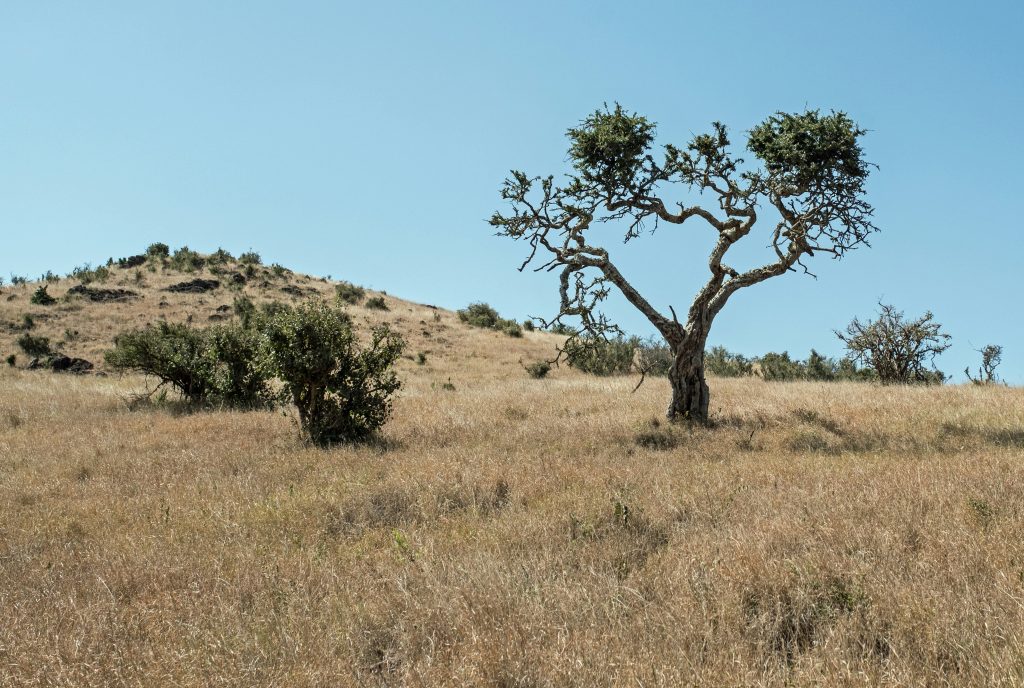Montero Mining is a Canadian junior explorer which formerly owned 82.5% of a rare earth deposit in Tanzania. Montero is one of three exploration companies with an investment treaty arbitration case against the Tanzanian government after the broad daylight expropriation of its lands. The state abolished the companies’ retention licenses, seized their deposits, and shopped them out in an illegal tender process (an auction), offering nothing back to them as original owners. In doing so, the state flagrantly breached international treaties between itself and the three juniors’ respective countries. Indiana Resources of Australia was awarded $110mm in damages on July 20th and Winshear Gold of Canada expects an imminent judgement for $95mm. Montero, the little-known pico-cap of this trio, is progressing through identical legal proceedings (see ICSID Case No. ARB/21/6) but on a timeline six months trailing. Its claim is for $90mm but its market cap is just $5mm – 18x upside to theoretical claim! The market simply isn’t giving credit to the fact that Indiana’s emphatic outcome is highly predictive of the same for Montero. Let’s dig in.
Current price: 13c Initial price target: 50c
Background to Retention Licenses and the Timeline
The mining commission would like to inform all owners of retention licences that the licences have been cancelled.
Idris Kikulasd, Tanzania Mining Commission Chairman
In most countries, a junior gets a prospecting license if it wants to explore land. If a junior discovers a deposit of “potential commercial significance”, it applies for a renewable retention license which secures tenure over the land so that a huge amount of test work can be carried out, readying an actual mining operation to start. This was the status quo in Tanzania until President Magufuli, “the bulldozer”, rose to power in 2015 amid economic crisis. Magufuli was an uncompromising populist who came out the gates promising citizens a larger slice of wealth from the country’s vast mineral riches. In 2017, he empowered Tanzania’s mining commission to take back control of the mining sector with sweeping reforms, including cancelling active retention licenses. Montero lost its otherwise valid license over rare earth deposit ‘Wigu Hill’ and had its site repossessed without warning. In 2020, the Tanzanian government attempted to cash in on their 11 expropriated deposits in total by announcing a public invitation for developers to tender for the lands (basically an auction). The invitation mentioned compensation for Montero, until it didn’t, as an amendment the very next day removed those words. Montero attempted negotiations for 12 months before going to court to show this was ineffective, and in 2021 it resorted to Canada’s BIT, hired Boies Schiller Flexner and registered a case with ICSID (following the Indiana and Winshear playbook who were in the exact same position).

Arbitration: Tanzania’s Defense (or lack of)
I’m looking at Indiana, Winshear and Montero as part of the same family, with Indiana having gone first to, effectively, show us what lies in wait for the others – a massive win. I’m not going to parse legal material as that lies outside my circle of competence, but I understand that in all three cases, Tanzania is on the hook for breaching a BIT (an agreement between countries to protect foreign investors). In defending itself, Tanzania feels it’s up against “biased” international tribunals which assemble at ICSID, the international centre for dispute resolution and the chosen forum for these cases to be heard. In fact, the state distrusts the outside world so much at the same time as revoking the retention licenses, Magufuli’s government passed a PPP Bill aiming to undermine ICSID and invalidate rulings in disputes outside Tanzania.
The PPP Bill seems designed to funnel more cases to its own courts where it has an obvious home advantage. However, ICSID set a precedent with Indiana and Winshear (if one was even needed) that claimants invoking an international treaty should have their case heard in a neutral jurisdiction. Montero’s hearing will take place in Washington DC, as Winshear’s did, and even more reassuring is that because Tanzania is a Member State of the World Bank, ICSID’s verdict will be enforceable as if it were a judgement of one of Tanzania’s own courts.
The government has recently been tearing up bilateral treaties to avoid this prospect of international arbitration when shit hits the fan with investors, though of course that only makes the country less attractive for foreign investment.
Arbitration: Cases Compared
I might reiterate that the context to all three juniors’ cases is the same and each is being fought with the same legal logic, but in the interests of good and proper due diligence, I will outline the differences that do exist between the cases and how these could affect the tribunal’s judgement.
| Claimant | Body | Dispute | Claimant Rep | Tanzania Rep | Outcome |
| Indiana | ICSID | Retention License Tender Change, UK-BIT | LALIVE Boies Schiller Flexner | Attorney General Solicitor General | 120% of claim (in principle, yet to be collected) |
| Winshear | ICSID | Retention License Tender Change, BIT | LALIVE Boies Schiller Flexner | Solicitor General | Pending |
| Montero | ICSID | Retention License Tender Change, BIT | Jeantet AARPI Boies Schiller Flexner | Attorney General Solicitor General | Pending |
Telling the Difference Between the Assets – the Deposits
The most important differences are between the developmental stages of each company’s deposit when the retention licenses were cancelled. This can get quite geological and nuanced but the tribunal will think as investors think to determine a financial award.
In mining, a long developmental journey begins after metallurgical test work is completed on land to indicate its potential. This spans several years or until the junior encounters a problem that stops the project dead in its tracks, such as local/national opposition, lack of infrastructure or water, or basic ESG rules (some kind of problem is almost inevitable… hence we don’t typically give exploration companies our money!). The deposit would need to show an Environmental and Social Impact Assessment (ESIA), Primary Economic Assessment (PEA), Pre-Feasibility Study (PFS) and 43-101 report before the BHP’s and Rio Tinto’s of the world, known as ‘majors’, get interested in bidding. The point I want to make is that deposits earn higher valuation multiples as these steps are achieved, so the tribunal will award more for the expropriation of more advanced deposits.
Indiana, with its ‘Ntaka Hill’ deposit, was awarded 120% of its claim and it never had any of these reports to show. The company did plan to drill targets to establish the size and grade of its deposit for a 43-101 report, disclosing interest from other companies to jointly participate in this work, but there were no firm commitments. In their favour, nickel prices have increased 75% since the license revocations in 2018 (but still no PEA).
Winshear’s SMP gold project has seen a full drill program and can boast a known resource compliant with 43-101 standards, but none of the other assessments were carried out when the license was revoked. Gold prices didn’t make the project viable at the time either, but this has now changed.
I’m not going to argue that any of these projects are far advanced, including Wigu Hill, but Wigu is most akin to Ntaka. Montero went as far as defining targets for a drill program that would support a future 43-101, engaging other companies to join in this work, and most rare earth prices are 50% higher now than in 2018. In contrast to both comps, it does have an ESIA report. The most important take away is that Indiana secured the stunning outcome it did with a deposit that was no more advanced than Montero’s Wigu Hill. If we’re agreed on that, the pitch gets over its main hurdle.

Arbitration: What to Expect
I’d expect Tanzania to settle with Winshear and Montero and avoid reputational damage with the World Bank. If Tanzania is made to pay compensation to Winshear by ICSID, the same will be a foregone conclusion in Montero’s litigation and the stock should immediately rerate on that news as a catalyst. We just need to be patient for the hearings and rulings.
Why Does the Opportunity Exist?
This opportunity exists because Montero Mining is an illiquid pico-cap (a tadpole of a company… super tiny) on the Canadian Toronto Stock Exchange; few professional investors would bother looking at $5mm market cap stocks, so this has been missed. I have a small account but it’s still been arduous for me to build a position in this at reasonable spreads. The idea just isn’t actionable for most larger players, and in addition, Winshear’s outcome is due sooner so more funds are being allocated there. Find the Winshear hearing on YouTube.
How Much Could We Make?
82.5% ($ damages awarded x % net after litigation cut x % damages enforceable)
The formula for Montero’s post-award market cap goes something like the above, factoring in ICSID’s decision on damages, Omni Bridgeway’s cut as provider of litigation funding and what Montero will realistically get out of Tanzania. I wouldn’t hold out hope that Tanzania could or would fess up more than half of the eventual award, so I’m assuming just 50% is collected, and with winnings owed to Omni Bridgeway undisclosed, I’ve set those at 30% (for ref, Indiana gave 30% to their financier). If the settlement is paid out as a special dividend to shareholders (still to be confirmed), we make 5-6x.
82.5% ($95mm x 70% x 50%) = $27.43mm or a mid .50's stock price (430% upside)If we show an abundance of caution and assume that Montero is awarded just $70mm of the $90mm claim by ICSID, set the financier’s cut at a chunkier 40% and predict that only 30% of ICSID’s award is able to be squeezed out of Tanzania, the stock is still a double based on the current market cap of $5mm.
82.5% ($70mm x 60% x 30%) = $10.4mmI am according no value to the rest of Montero’s business outside their Wigu Hill legal claim, even though they have a handful of other deposits in Chile. If Montero loses this case, as unlikely as that may seem, the stock would have nothing to fall back on. The other remaining issue is what management decides to do with the award. It should be paid out as a special dividend but if they plough it back into more explorative efforts around South America and Africa, it goes to waste as far as shareholders like me are concerned.
I will enquire about this but for now, let’s leave it and see what happens next.
Long MON.V and WINS.V
Leave a Reply